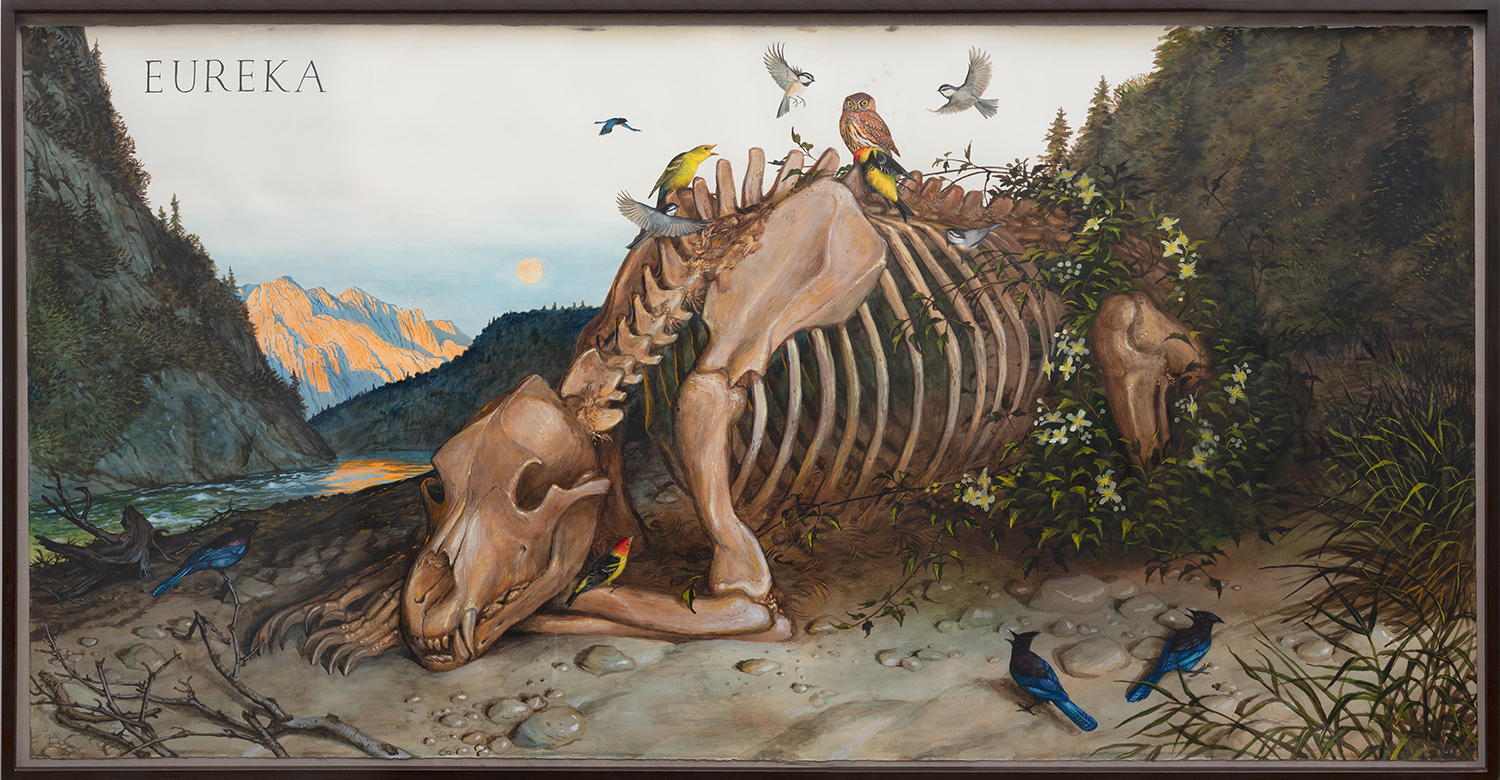Meat Growers: A Love Story
2019 - Advanced Technology (Advanced Technology)
13:42 minutes
Rindon Johnson
The VR play Meat Growers: A Love Story by Rindon Johnson centers on two meat growers who work together in a meat processing factory in the year 2100. The setting is a post-Green New Deal Napa Valley where there are no more paved roads, trees abound, and all the strip malls have been turned into food forests and meat growing plants. The protagonists seem to move through their day automatically, yearning for each other, as the viewer acts as a friend and confidant, silently bearing witness to their desire. In the play, gender is never mentioned, and race is ambiguous. The viewer’s character carpools to work in a solar VW bug, listening to their colleagues’ enthusiastic monologues, and watching the landscape roll by. The conversation revolves around their relationship with the natural landscape around them, with disease, modes of production, and survival needs, but moves on to discussions of intimacy, and is suffused throughout with love and longing between the two. This VR play was staged using a game engine, and the ready-made aesthetics of this contribute to the sense that the work creates one version of the future (among many possibilities) being prototyped—a decidedly less than utopian version, but one that makes space for labor, love, and survival.
Rindon Johnson’s work in sculpture, video, poetry, and virtual reality deals with technologies that enable captivity and the harnessing and transformation of nature from a gender- and race-critical perspective. A central motif in his work is the cow, which has been bred for centuries with an eye to maximum profit and consumer pleasure. He often uses cowhide as a sculptural material, drawing out connotations that relate to the commodification of bodies and the attendant destruction this brings. A past collaborator of Jakob Kudsk Steensen, Johnson came to virtual reality through the practice of writing poetry. In both poetry and VR, Johnson observes, “worlds can be endless, limitless, emotional, tyrannical.” Thus, Johnson’s practice is unique for its thematic and material connection of the very old and the very new, the emotional and the embodied, and as a way of thinking through climate grief and crisis.
Colors:
Related works sharing similar palette
» see more

© » GALERIE MAGAZINE
5 Must-See Artworks at ZonaMaco 2024 - Galerie Subscribe Art + Culture Interiors Style + Design Emerging Artists Discoveries Artist Guide More Creative Minds Life Imitates Art Real estate Events Video Galerie House of Art and Design Subscribe About Press Advertising Contact Us Follow Galerie Sign up to receive our newsletter Subscribe ZONAMACO 2024...

© » ARTS EQUATOR
Book Review: "The State and The Arts in Singapore: Policies and Institutions" | ArtsEquator Thinking and Talking about Arts and Culture in Southeast Asia Articles Images courtesy of Institute of Policy Studies, Singapore April 9, 2019 By Chin Ailin (734 words, four-minute read) Commissioned by the Institute of Policy Studies of Singapore (IPS) to trace the course of cultural policy in Singapore from the 1950s to the present, The State and the Arts in Singapore: Policies and Institutions is a comprehensive tome that should serve as an essential text in time to come for any student’s introduction to Singapore’s arts and cultural policies...

© » KADIST
John Lucas and Claudia Rankine
2018Historically, blondeness has been a signifier for desirability and beauty, speaking to “purity” — the purity of whiteness — like no other bodily attribute except, perhaps, blue eyes...
Related works found in the same semantic group
» see more

© » KADIST
Beatriz Santiago Muñoz
2015Marché Salomon by Beatriz Santiago Muñoz depicts two meat vendors, a young man and woman, chatting in Marché Salomon, a busy Port-au-Prince market...

© » KADIST
Cildo Meireles
1975Meireles, whose work often involves sound, refers to Sal Sem Carne (Salt Without Meat) as a “sound sculpture.” The printed images and sounds recorded on this vinyl record and it’s lithographed sleeve describe the massacre of the Krahó people of Brazil...

© » LENS CULTURE
In Search of Brilliant Moments: Street Photography’s Heightened Existence - Interview with Matt Stuart | By Alexander Strecker | LensCulture Interview In Search of Brilliant Moments: Street Photography’s Heightened Existence “You are looking for a single, brilliant moment and 99% of the time, you won’t get it...

© » OBSERVER
A Guide to Miami Art Week Satellite Fairs and Shows | Observer Art Miami and Art Basel Miami Beach 2023 are in full swing, with all the associated parties, pop-ups and sundry events, including everything from concerts by Diplo and Lil Wayne to the opening of a temporary Murakami x BLACKPINK collab shop to the “Patina Experience” (an exhibition of the world’s largest Mercedes collection)...

